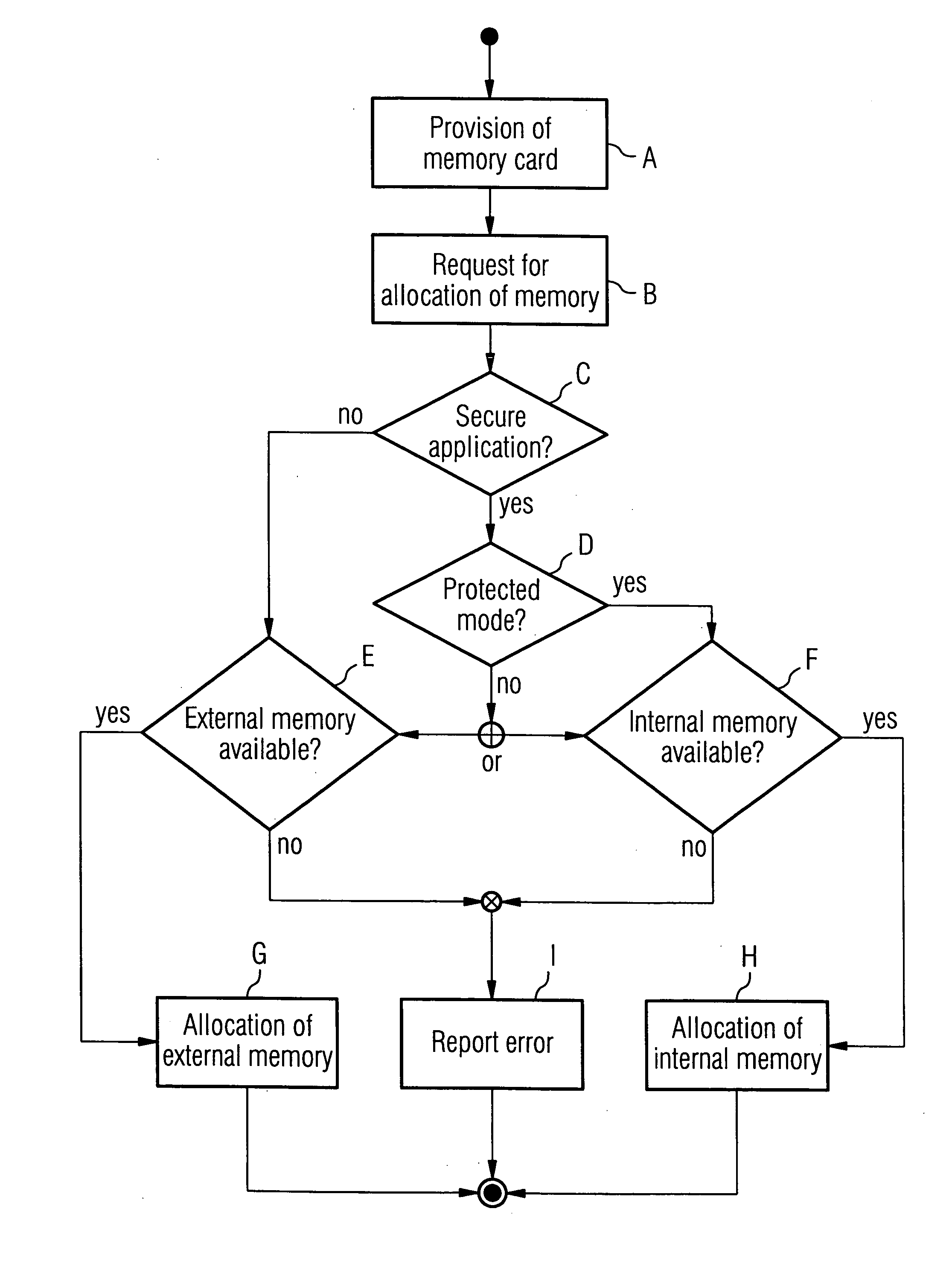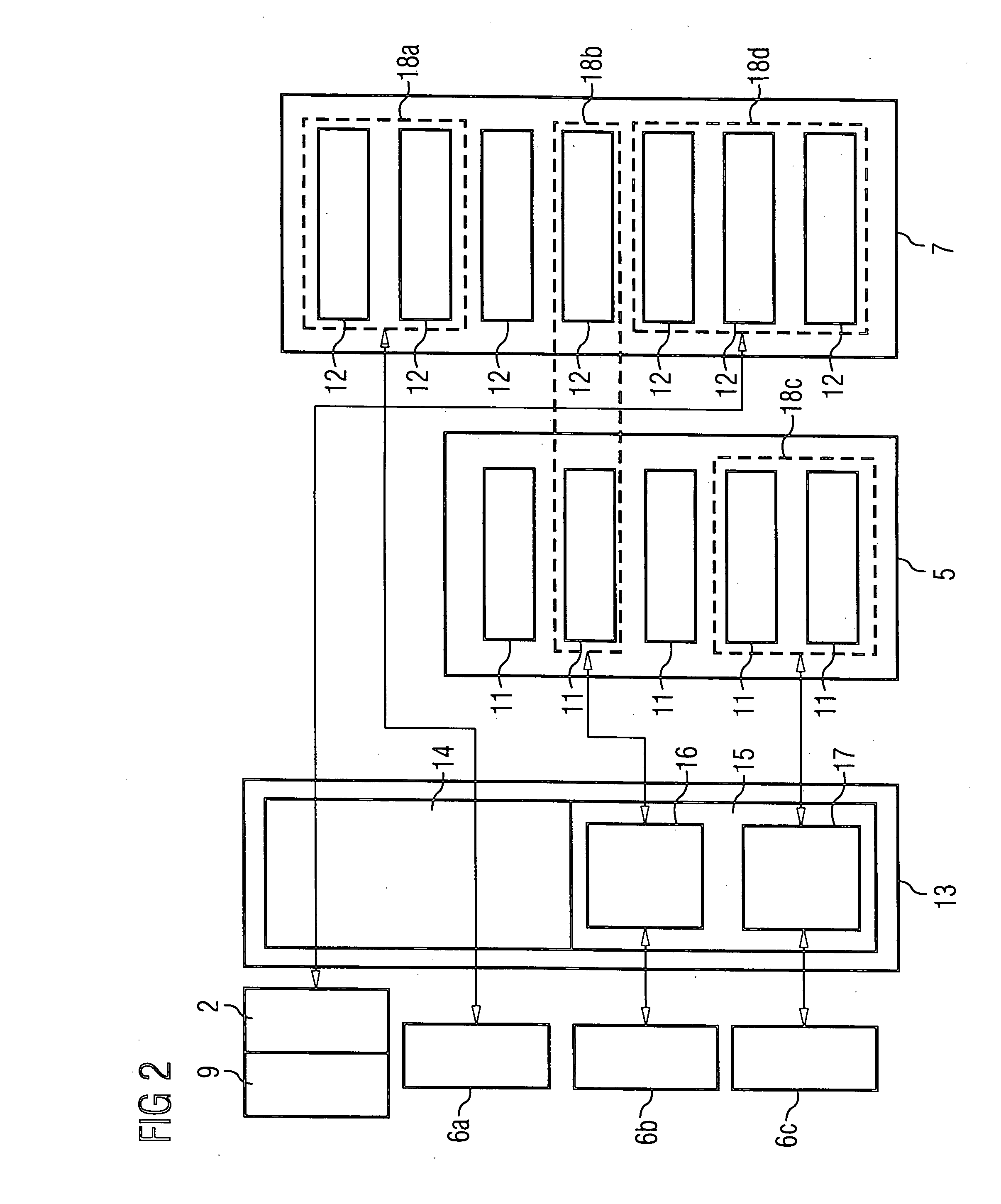Method and system for allocating, accessing and de-allocating storage space of a memory card
a memory card and storage space technology, applied in the field of memory cards, can solve the problems of fixed distribution of protected and unprotected data, difficult unauthorized access to data, etc., and achieve the effect of easy multiple application loading and slower access speed to the memory module integrated into the trm
- Summary
- Abstract
- Description
- Claims
- Application Information
AI Technical Summary
Benefits of technology
Problems solved by technology
Method used
Image
Examples
Embodiment Construction
[0022]FIG. 1 shows a memory card 1. The memory card 1 comprises a protocol adapter 2 and a tamper resistant module 3. The protocol adapter 2 comprises a controller (not shown) and other components required for data exchange between an external host system 9 and the memory card 1 through an interface 10. The tamper resistant module 3 comprises a processor 4 and a first non-volatile memory module 5. The processor 4 comprises three applications 6, which are being executed inside the processor 4. The memory card 1 further comprises a second non-volatile memory module 7. The protocol adapter 2, the tamper resistant module 3 and the second non-volatile memory module 7 are connected by a communication bus 8.
[0023] The host system 9 can access the second non-volatile memory module 7 using the interface 10, the protocol adapter 2 and the communication bus 8. However, the first non-volatile memory module 5 can only be accessed by the processor 4 contained in the tamper resistant module 3. Fo...
PUM
 Login to View More
Login to View More Abstract
Description
Claims
Application Information
 Login to View More
Login to View More - R&D
- Intellectual Property
- Life Sciences
- Materials
- Tech Scout
- Unparalleled Data Quality
- Higher Quality Content
- 60% Fewer Hallucinations
Browse by: Latest US Patents, China's latest patents, Technical Efficacy Thesaurus, Application Domain, Technology Topic, Popular Technical Reports.
© 2025 PatSnap. All rights reserved.Legal|Privacy policy|Modern Slavery Act Transparency Statement|Sitemap|About US| Contact US: help@patsnap.com



